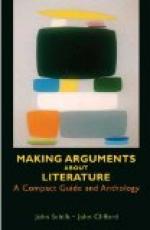In the old days before it had been discovered that the germs of malaria are carried by mosquitoes, the disease was ascribed to a miasma which floated over low ground at night; and the innkeepers of the Roman Campagna, where malaria had almost driven out the population, urged their guests never to leave their windows open at night, for fear of letting in the miasma. In the lights of those days this was good reasoning by the method of agreement, for it was common observation that of all the many kinds of people who slept with their windows open most had malaria. We are constantly using this method in cases of this sort, where from observation we are sure that a single cause is at work under diverse circumstances. If the cases are numerous enough and diverse enough, we arrive at a safe degree of certainty for practical purposes. As the case just cited shows, however, the method does not establish a cause with great certainty. No matter how many cases we gather, if a whole new field related to the subject happens to be opened up, the agreement may be shattered.
The method of difference, which in some cases does establish causes with as great certainty as is possible for human fallibility, works in the opposite way: instead of collecting a large number of cases and noting the single point of agreement, it takes a single case and varies a single one of its elements. The method has been stated as follows:
If an instance in which the phenomenon occurs, and an instance in which it does not occur, have every circumstance in common save one, that one occurring only in the former; the circumstance in which alone the two instances differ, is the effect, or the cause, or an indispensable part of the cause, of the phenomenon.[35]
The principle is clearer and more apprehensible in the concrete example than in the abstract statement; as a matter of fact it is applied in every experimental search for a cause. The Agricultural College of New York, for example, in the course of certain experiments on apple orchards, bought an orchard which had not been yielding well, and divided it into halves; one half was then kept plowed and cultivated, the other half was left in grass; otherwise the treatment was the same. When the half which was kept cultivated gave a much larger yield than the other, it was safe to infer that the cultivation was the cause of the heavier yield. Dr. Ehrlich, the great German pathologist, is said to have tried six hundred and five different substances before he found one which would kill the germ of a certain disease; in each experiment he was using the method of difference, keeping the conditions the same in all except a single point, which was the addition of the substance used in that particular experiment. Wherever the conditions of an experiment can be thus controlled, the method of difference gives a very accurate way of discovering causes. With advancing knowledge a supposed cause may be in turn analyzed in such a way that each of its parts can be separately varied, in order to come more closely to the actual sequence involved.




